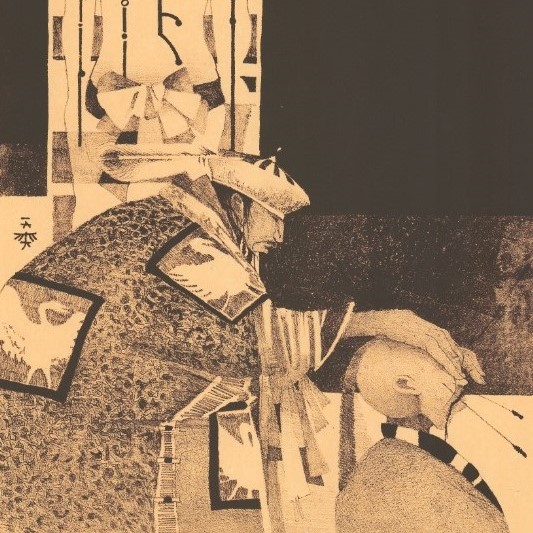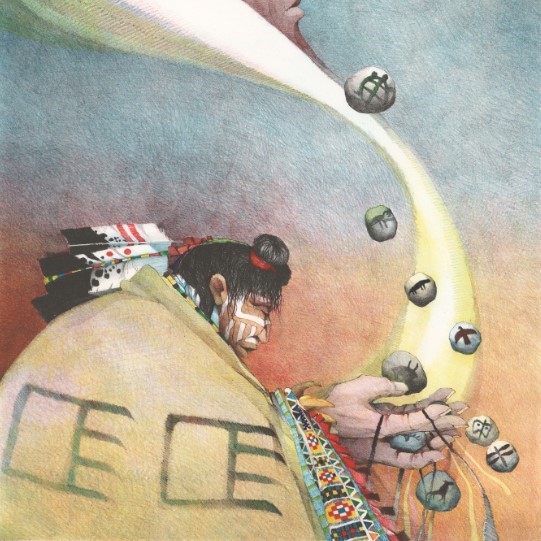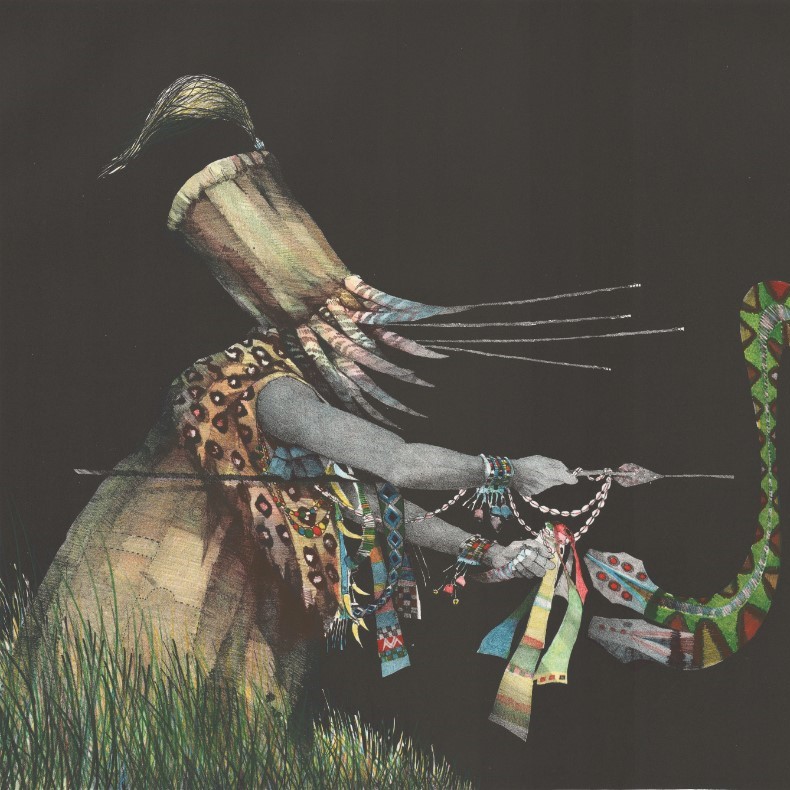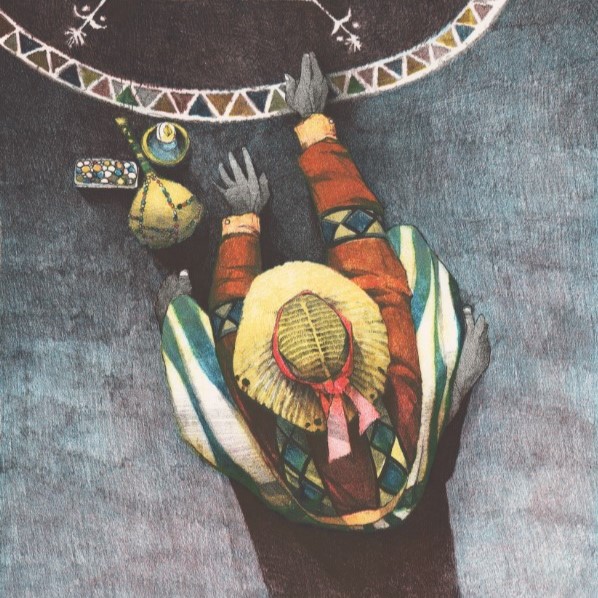John L. Doyle, Acupuncturist, 1980, lithograph
Acupuncturist shows a story of medicine and belief. The central figure would have been instantly recognized as significant by his contemporaries. He wears a coat with squares known as dragon badges, a denotation of court rank. On his head is a peacock feather tucked into a winter hat of monkey fur, representing his service to the emperor. He bows and covers his patient’s eyes, encouraging you not only to see medicine being practiced, but a wholly spiritual tradition. In ancient China, acupuncture was used to bring balance to the body, while today it is seen as a strategic therapy for chronic illnesses. Acupuncturist invites you to consider the importance of aligning body with mind in harmony.
Text by Lily Greene
John L. Doyle, Bear Cult Shaman, 1980, lithograph
A shaman is an individual who is able to communicate with spiritual beings. Historically, this has been a significant practice in the Sioux Nation, whom the warrior-doctor in Bear Cult Shaman is affiliated with. While meditating, he holds stones that act as a host for spirits. As the shaman calls upon the spirits, one slowly rises and shows its awakened face while offering healing energy. In many cultures like the Sioux Nation, spirituality is a popular way of treating health issues and practicing inner healing. How does spirituality fit into your own routine of healthcare?
Text by Alijah McCracken
John L. Doyle, Luo Witchdoctor, 1980, lithograph
This artwork depicts a witchdoctor of the Luo people of East Africa. He is performing a ritual in which he combats a demon in the form of a giant water serpent. According to traditional Luo belief, if the serpent descends into a particular lake headfirst, disease will follow it. The witchdoctor’s job is to force it into the lake by its tail in an attempt to hinder the disease. He is armed with a mask made from antelope hide and horns to show strength and fertility, and a cowrie shell covering his wand, which provides a path for his protective spirit to follow. With these symbols of power, he acts as the protector of his tribe in both the physical and spiritual realms.
Text by Jaden Leffler
John L. Doyle, Blackfoot Medicine Man, 1980, lithograph
The central figure in Blackfoot Medicine Man stands out compared to the bright yellow background. The traditional belief system of the Blackfoot, a tribe historically connected to the northern Great Plains region, is animistic, meaning they believe in the spirits of animals and natural features. The pipe which the medicine man is holding was used to eliminate evil spirits in cleansing rituals. One method that medicine men used to exorcise illness was sucking the diseased spirit from the body through a pipe and blowing it out.
Text by Tomoki Moriyama
John L. Doyle, Herbalist, 1980, lithograph
I chose this work because I love the color composition and the concept of the herbalist as a healer. The background of muted reds and greens is soothing to me, and I like the striped gallabiyah (Egyptian men’s garment) and leopard skin robe. I also love the idea of the herbalist, in that nature has provided us with so many healing herbs. Contemporary society seems to focus more on pharmaceuticals and less on natural remedies. However, there are still some herbalists and holistic professionals today who treat a variety of modern illnesses and allergies through plants and other natural therapies.
Text by Tricia Eddy
John L. Doyle, Voodoo Houngan, 1980, lithograph
This print depicts a houngan, or Voodoo priest who helps his people by performing rituals and healing with herbal and traditional remedies. The houngan in this work is summoning a loa, or spirit, by ritualistically drawing a symbol on the ground in wheat-maize flour. The symbol, known as a veve, calls upon Baron Samedi, the father of spirits of the dead and the loa associated with healing and resurrection. His veve includes a crossroads and coffins, both of which signify in-between spaces. Sitting next to the houngan are summoning implements and offerings for Baron Samedi.
Text by Shelby Dutton







